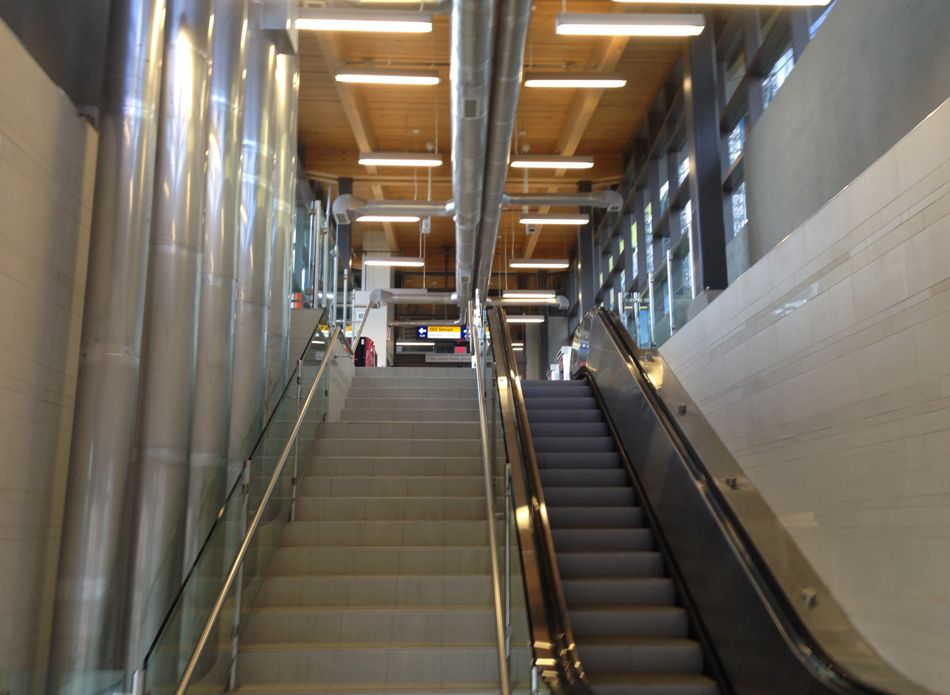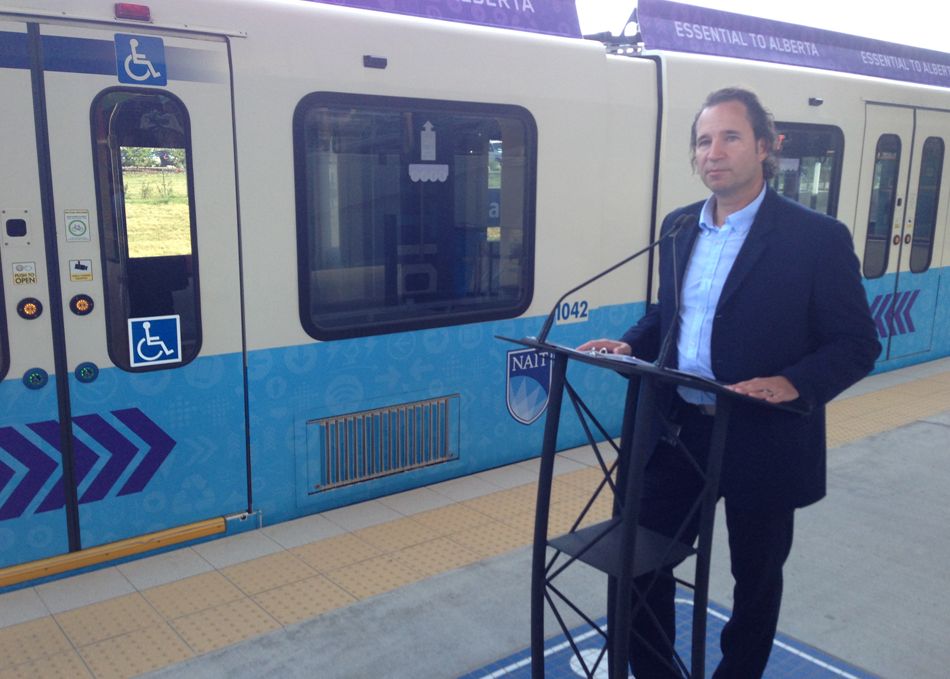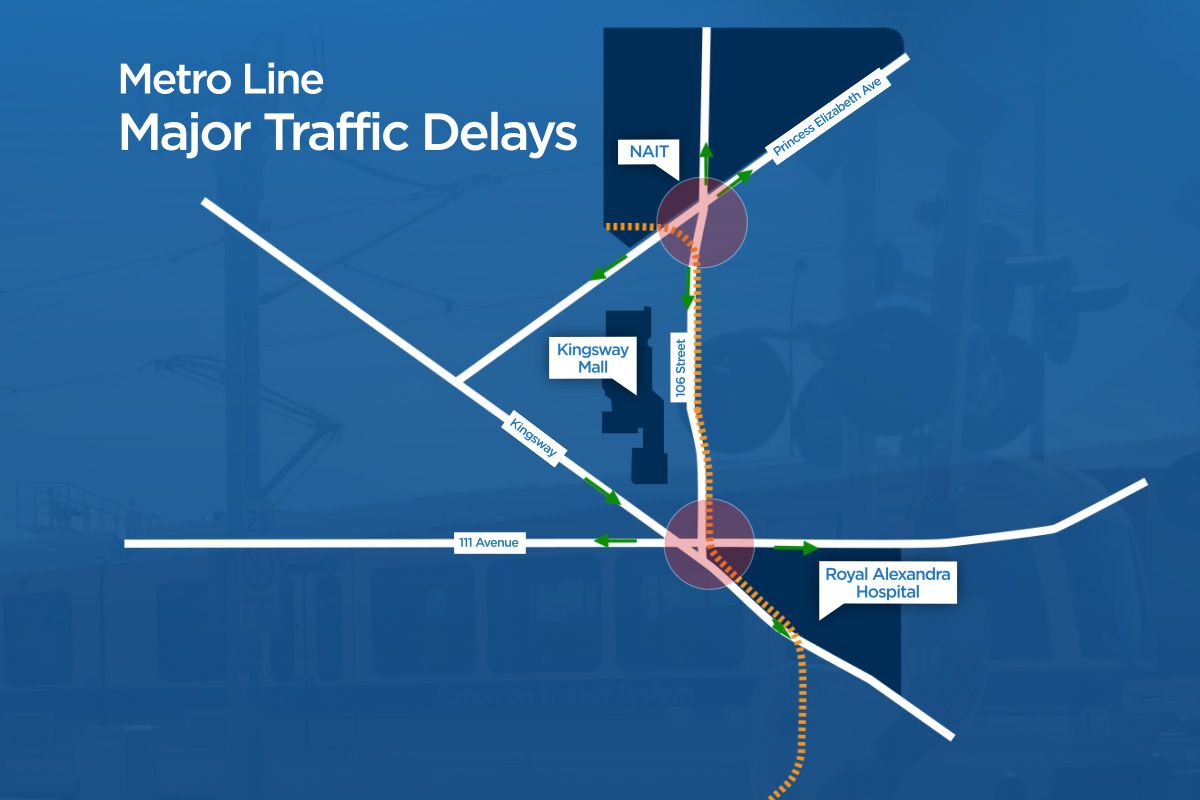WATCH ABOVE: It was supposed to be a celebration, but the Metro LRT Line to NAIT is just days away from opening under a cloud of controversy. Vinesh Pratap explains.

EDMONTON — The city’s new Metro LRT Line – which offers transit service west from central Edmonton with stops at MacEwan, Kingsway/Royal Alex and NAIT – will officially open Sept. 6, but not without significant traffic and transit delays.
The $755-million project came in about $90 million under budget, for a total cost of $665 million.
“I’d like to thank the people of Edmonton for their patience, and welcome everyone aboard the Metro Line,” said Transportation Services GM Dorian Wandzura.
“While this project has faced many challenges we are opening Edmonton’s new LRT extension to public service in time for the start of the 2015-2016 school year.”
On Wednesday, the city’s transportation committee heard there could be “significant” traffic delays on key routes during peak rush hours and that some delays could be permanent.
READ MORE: Drivers could be stuck at LRT crossing for up to 16 minutes: Metro update
At some crossings, a report estimates drivers might wait only two minutes while LRT trains operate on a 15-minute frequency. However, for two specific intersections – Princess Elizabeth Avenue/106 Street and 111 Avenue/Kingsway Avenue – the wait could be as long as 16 minutes.
“Motorists are being advised to expect delays and be patient as during peaks hours it may take up to four cycles for a vehicle to have the opportunity to clear one of these intersections and that means up to 16 minutes waiting in a queue that extends multiple blocks,” the report said.
- Alberta to overhaul municipal rules to include sweeping new powers, municipal political parties
- Canada, U.S., U.K. lay additional sanctions on Iran over attack on Israel
- TikTok vows to sue over potential U.S. ban. What’s the legal outlook?
- No more ‘bonjour-hi’? Montreal mayor calls for French only greetings
“This is very disappointing,” said Mayor Don Iveson. “I didn’t expect the numbers to be like this.”
Every third northbound train leaving from Century Park to Churchill Station will be a Metro Line train, turning northwest after leaving Churchill Station. LRT passengers are asked to give themselves more travel time to make connections.
Due to the ongoing challenges integrating the new signalling system, the Metro LRT Line will be opened in stages. At first, Metro trains will offer service on a 15-minute frequency between Churchill and NAIT stations. They will also be running at a slower, 25-kilometre hour speed limit. Once that limit is lifted and the signalling system is fully operational, Metro trains will travel faster and operate on a 10-minute frequency.

Because of the staged implementation of the Metro Line, LRT service between Churchill and Clareview stations will be reduced. During peak periods, the north part of the main LRT line will operate on a five or 10-minute frequency. To offset the reduction in frequency, the city added more capacity by using five-car trains.
Transportation officials expect traffic wait times at Metro LRT-impacted intersections will go down as drivers adjust to the changes and others choose other routes to avoid those intersections.
“The Metro Line brings a significant change to Edmonton’s urban landscape as well as its transportation, and it will take some time for everyone to adjust to the new LRT operations,” said Wandzura. “Over time, and with patience from everyone, people will adapt to the change as Metro Line service improves.”
However, the transportation committee heard Wednesday that even when the Metro Line is operating normally, there may only be a 15 per cent improvement to traffic flows in some areas.
That is raising concerns when it comes to emergency services. The Royal Alexandra Hospital is right at the heart of where the lengthy traffic delays are expected. The Alex is a major trauma hospital with a lot of ambulance traffic.
The union representing paramedics described the situation as “boondogglish.”
“In emergency medicine, they talk about ‘time is heart muscle, time is brain, time is life.’ Any delay is going to be unwelcome,” said Elisabeth Ballerman with the Health Sciences Association of Alberta.
“It’s going to add stress and potentially delays to patient care. It’s going to add stress to our members who are the EMS practitioners.”
WATCH: There are concerns that the traffic delays caused by the new Metro LRT line could impact people’s lives. Fletcher Kent explains.
The chief paramedic for Alberta Health Services said he’s also concerned about any situation leading to delays on the road but added he’s confident paramedics will find ways around problems. AHS also said it would be open to looking at new options like stopping trains in an emergency.
“There’s no specific protocol in contacting ETS at this point, although that’s certainly something we’d look to entertain some dialogue on,” said AHS Chief Paramedic Darren Sandbeck.
In a motion late Wednesday, the committee asked city administration to:
- report on the feasibility of moving the NAIT LRT Station to east of 106 Street;
- bring a report on other possible measures to mitigate issues identified with the Metro Line;
- report on the feasibility of grade separating the Princess Elizabeth Avenue crossing as part of the next phase of NW Extension through Blatchford and beyond.
“This council needs to take control of these projects and that the info we’re getting can be relied upon,” said Iveson, stressing problems like this cannot happen again.
WATCH: GM of Edmonton’s Transportation Services Dorian Wandzura joins us to talk about the delays associated with the new Metro LRT Line.


















Comments